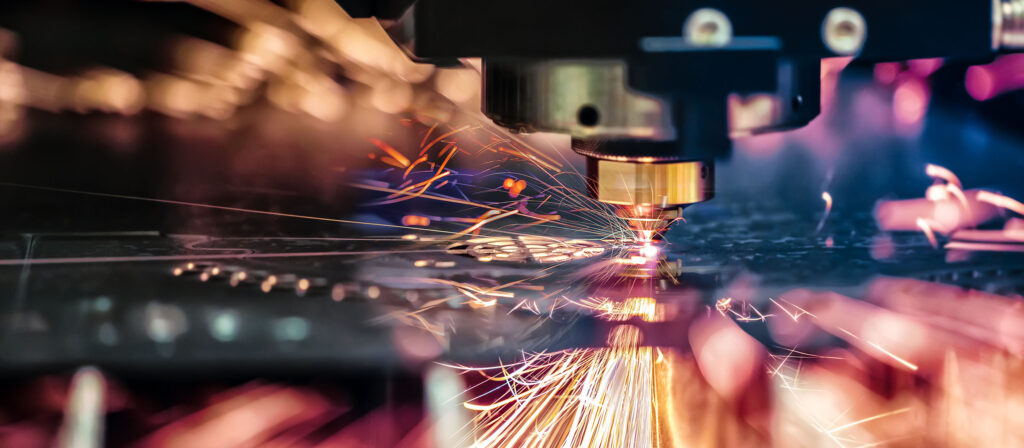WHY CHOOSE FIBER LASER cutting machine
Increase metal cutting speeds & accuracy
Get better results also in brass and copper cutting
Cut operating costs
The results? Higher production and higher profitability
Making the right decision
Thinking of making the switch to fiber laser? Great choice – they increase metal cutting speeds and cut operating costs. They also cut with greater accuracy and power in thin to mid-range materials and are better suited for cutting reflective or non-ferrous metals like brass and copper. All these factors result in more productive and more profitable business.
That said not all fiber lasers are created equal and not all fabrication shops benefit from making the switch. It’s a good idea to take the time to do your research and find the right machine for your business. Consider the financial and operational implications a fiber laser will have on your shop. After all it is a big investment with the potential to reap big rewards.
Here are some things to think about before buying a fiber laser:
What will a fiber laser replace in your current shop?
Depending on your shop’s current configuration a fiber laser may replace several machines (think shear and punch press for example).
Think about what purpose it will serve and what that means for your current setup. If a fiber laser will replace multiple machines it may mean a substantial decrease in maintenance and operating costs over time.
What will a fiber laser cost you to operate?
Fiber lasers cost much less to operate than CO2 lasers. While many fiber laser purchase costs are comparable to C02 lasers they are much more efficient and can cost 50% less to operate. Solid state resonators are simpler with no moving parts and no mirrors are needed to deliver
the beam to the head. This significantly reduces maintenance and service costs. Plus they have higher electrical efficiency meaning you’ll spend far less to power them.
Who is the machine tool builder and do they have a local presence?
Research the manufacturers for the fiber lasers you are considering.
Many fabricators instinctively go for well-known brands but there are benefits to choosing smaller companies as well.
When it comes to sales, larger OEM’s typically represent themselves while smaller manufacturers work through a dealer network. If you want to deal directly with the manufacturer it’s a good idea to find out where the service and parts come from and whether or not they have
a local presence. One benefit of working with a local dealer is the proximity but look into whether they stock parts and service the machines themselves or are still dependent on the OEM.
What is the type and make of the resonator?
Not all fiber lasers are the same. Many machine tool builders use IPG resonators but some larger manufacturers have their own versions. Compare the cost of repair and regular maintenance requirements for each and how that could impact your work-flow and budget.
What automation options are available?
Automation is no longer an idle consideration. This is especially true when considering the cutting speeds of fiber lasers. In some cases fiber lasers cut parts so quickly operators are not able to load new material fast enough.
We suggest checking out the shuttle table exchange times – this is something that is becoming crucial as cutting speed increases. Slower exchanges can slow down overall productivity.
For example, the shuttle exchange in Eagle Fiber Laser machines is 21 seconds faster than conventional hydraulic shuttle table changeovers.
That 21 seconds adds up throughout the day! You can see the Eagle Fiber Laser in action here and how its shuttle exchange compares to conventional machines here. Of course automation only starts at the pallet shuttle. Automatic loading of the empty pallet coupled with material storage options make for the real difference in “lights out”operation. Investigate the options available from your suppliers.
How much power do you need?
Fiber technology is constantly evolving – and it’s the way of the future in the metal fabrication industry. One of the most exciting things in this new era of metal fabrication is that fiber lasers have almost no limit to their power! All new developments are racing to deliver more power and more power means more productivity.
Increased wattage decreases cut time dramatically – and not just for thin materials.
For example, if your shop needs to process 16 GA mild steel, a 2000W resonator will cut it at a rate of over 400 IPM while a 6000W resonator will do it at 1300 IPM. Better yet the Eagle 12KW machine has the potential to cut this material at 2600 IPM. That could mean your shop is producing double the amount of parts per day!
When choosing a fiber laser think about what your shop really needs. Consider what you need your machines to do for you – including functionality and productivity levels – and what impact a fiber machine will have in your shop when it comes to operations on the floor and, of course, your
bottom line.

 English
English Italiano
Italiano
